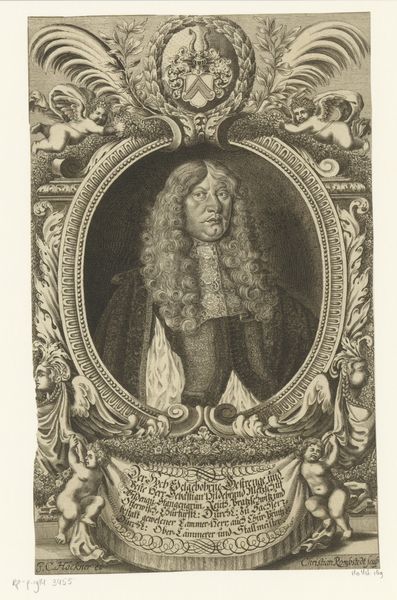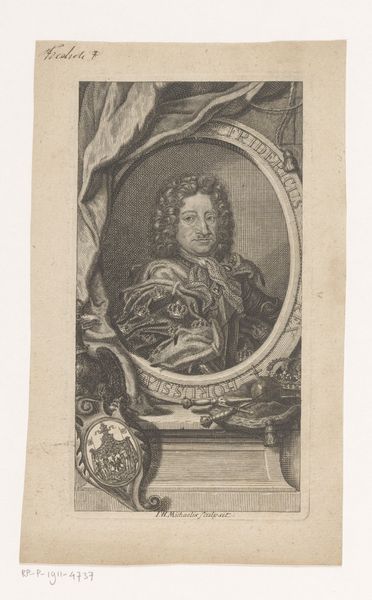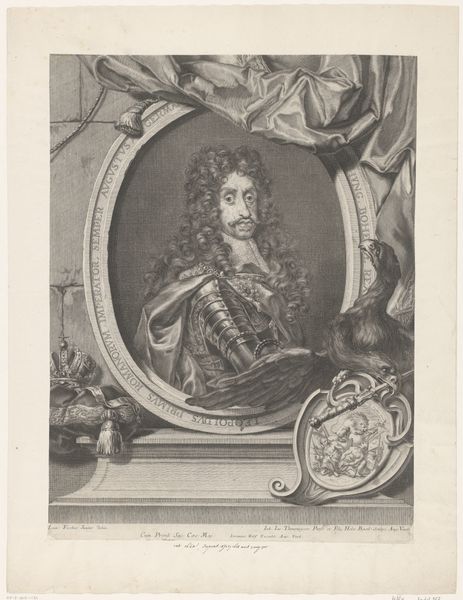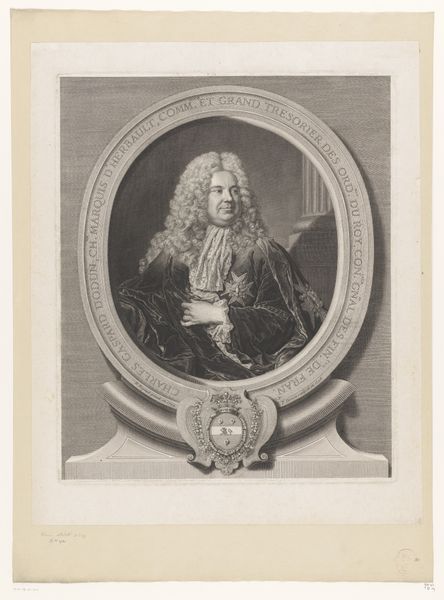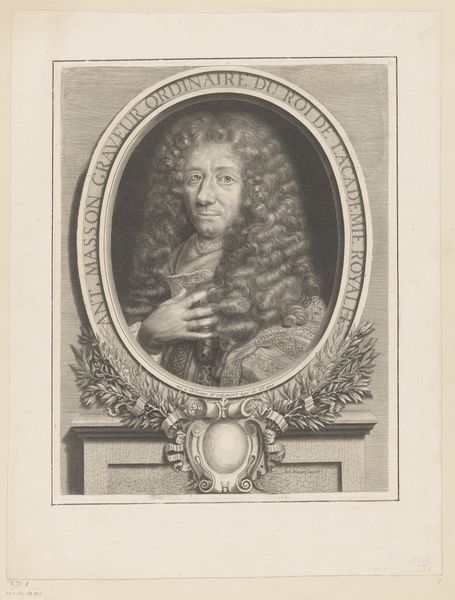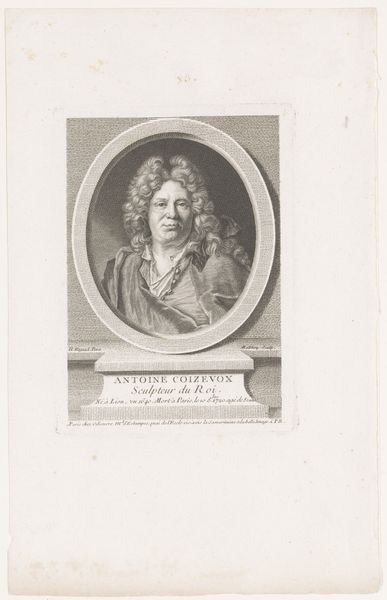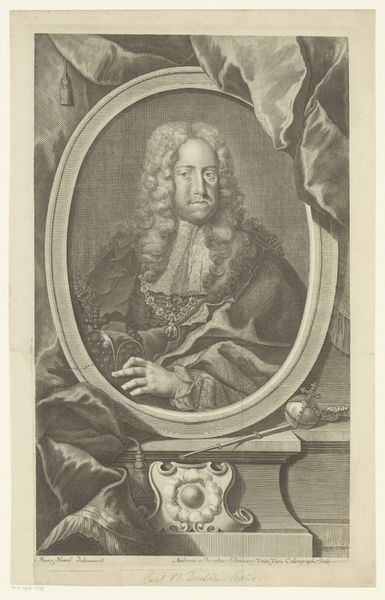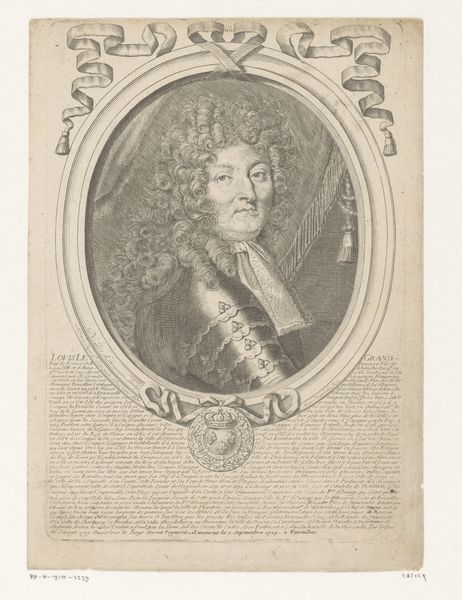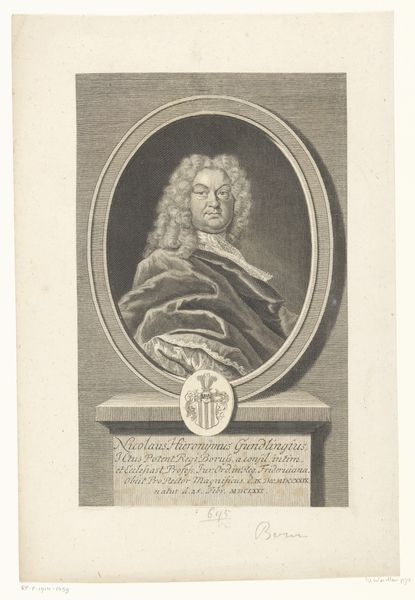
print, engraving
#
portrait
#
baroque
#
ink painting
# print
#
figuration
#
history-painting
#
engraving
Dimensions: 405 mm (height) x 354 mm (width) (bladmaal)
Curator: Ah, here we are standing before Johann Husman's engraving, "Griffenfeld som Rigskansler," dating from 1673 to 1676. An intriguing portrait, wouldn't you agree? Editor: It is! At first glance, I am struck by its ornamental quality. There’s a surfeit of adornment fighting for my attention! All those baroque embellishments around the central portrait—cupids, leaves, inscriptions. Curator: Ornament was the point, I think! A testament to Griffenfeld's position and influence. Husman clearly invests the print with markers of status through this excess, this baroque splendor, which speaks volumes about the social structures of the time, how power was visualized, printed, circulated. Editor: Absolutely. Engraving as a reproductive medium meant power extended beyond the single artwork and was translated into the accessibility of the image. This wasn't about singular artistic genius, but skilled craft. Curator: Indeed! And looking closely, one appreciates the detailed lines, almost jewel-like, isn't it? Despite the print medium, you feel as though Husman is seeking to capture the essence of Griffenfeld—a man who was ambitious, cunning, but ultimately fell from grace. Do you see it in his eyes? That mix of intelligence and...melancholy, perhaps? Editor: The eyes are difficult to read in a reproduced portrait like this. My focus shifts towards the process – the plates, the inking, the pressure needed. These prints would have been a form of currency – traded, collected, and they signified value due to the labor involved, far from today’s fast consumable images. Curator: Fascinating to consider how the medium affects the message. Though it seems the history remembers Peder Schumacher—Griffenfeld’s real name—primarily as a schemer and political infighter. The image feels like propaganda, as much as an accurate picture of a person! Perhaps the eyes aren't so melancholy after all... Perhaps it's just a carefully constructed performance, perfectly replicated by the artist. Editor: It makes you question the idea of artistic authorship when skilled reproduction becomes the central act. It throws conventional ideas about value onto its head, doesn’t it? Curator: Precisely. A potent reminder to challenge assumptions—both about art and those it depicts! Editor: Yes, it shows how every visual representation comes loaded with a host of different stories beyond just the aesthetic ones.
Comments
No comments
Be the first to comment and join the conversation on the ultimate creative platform.
